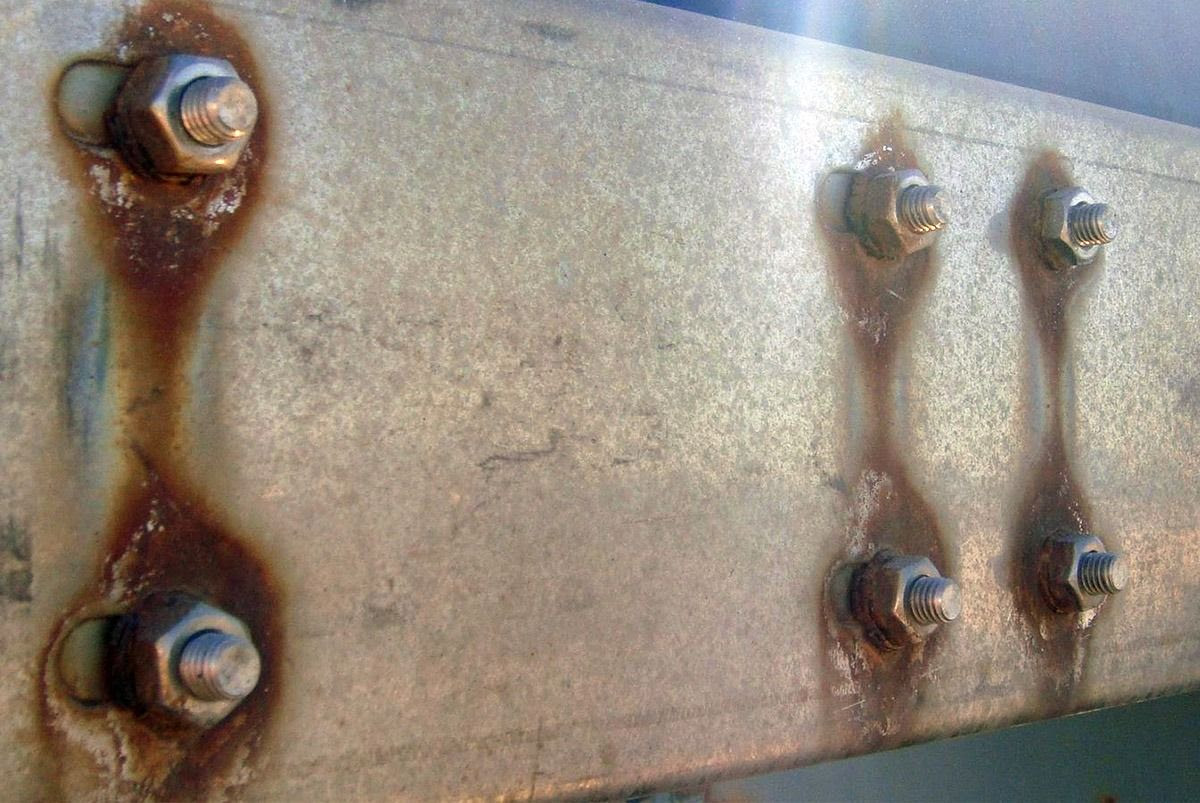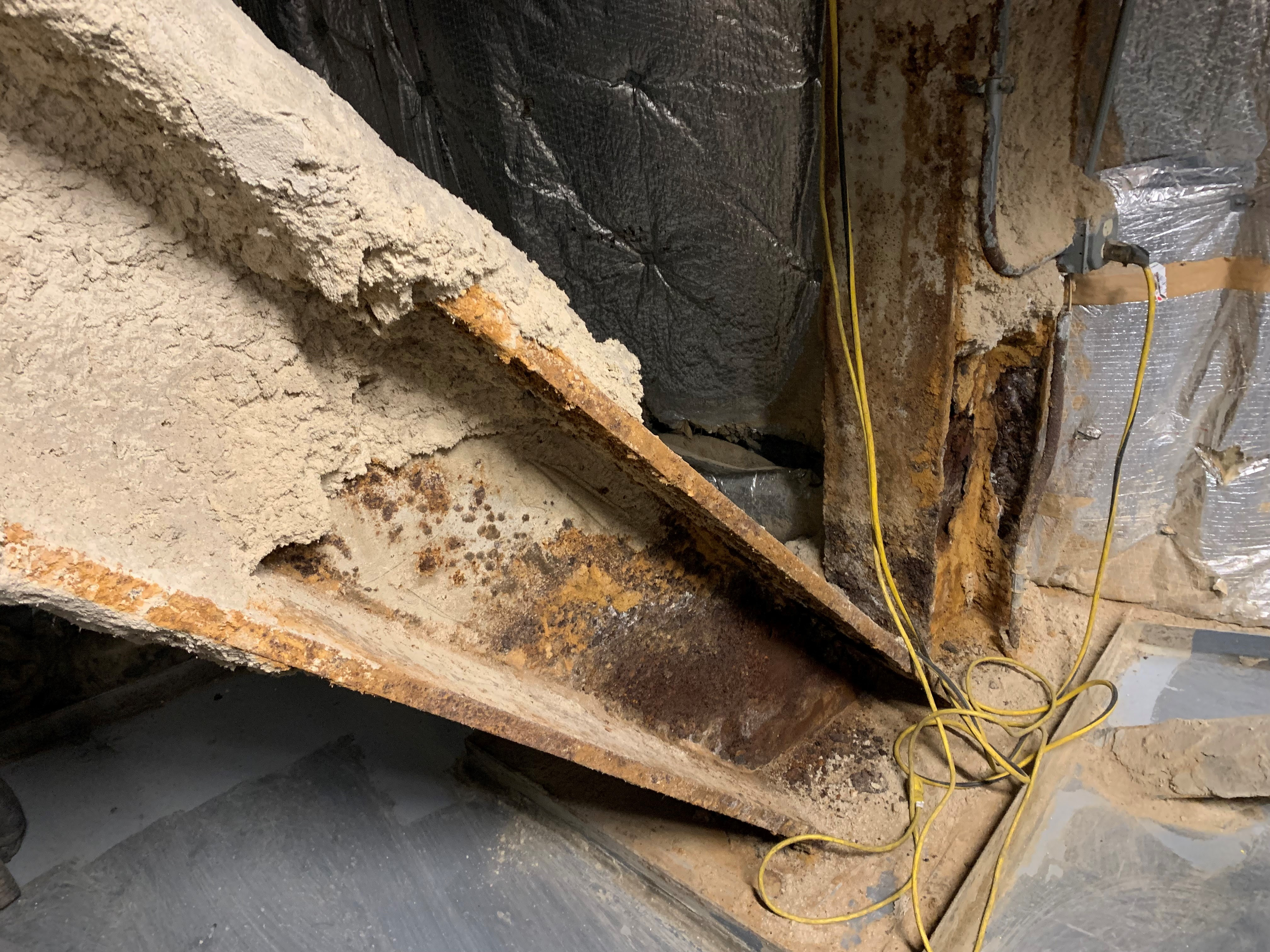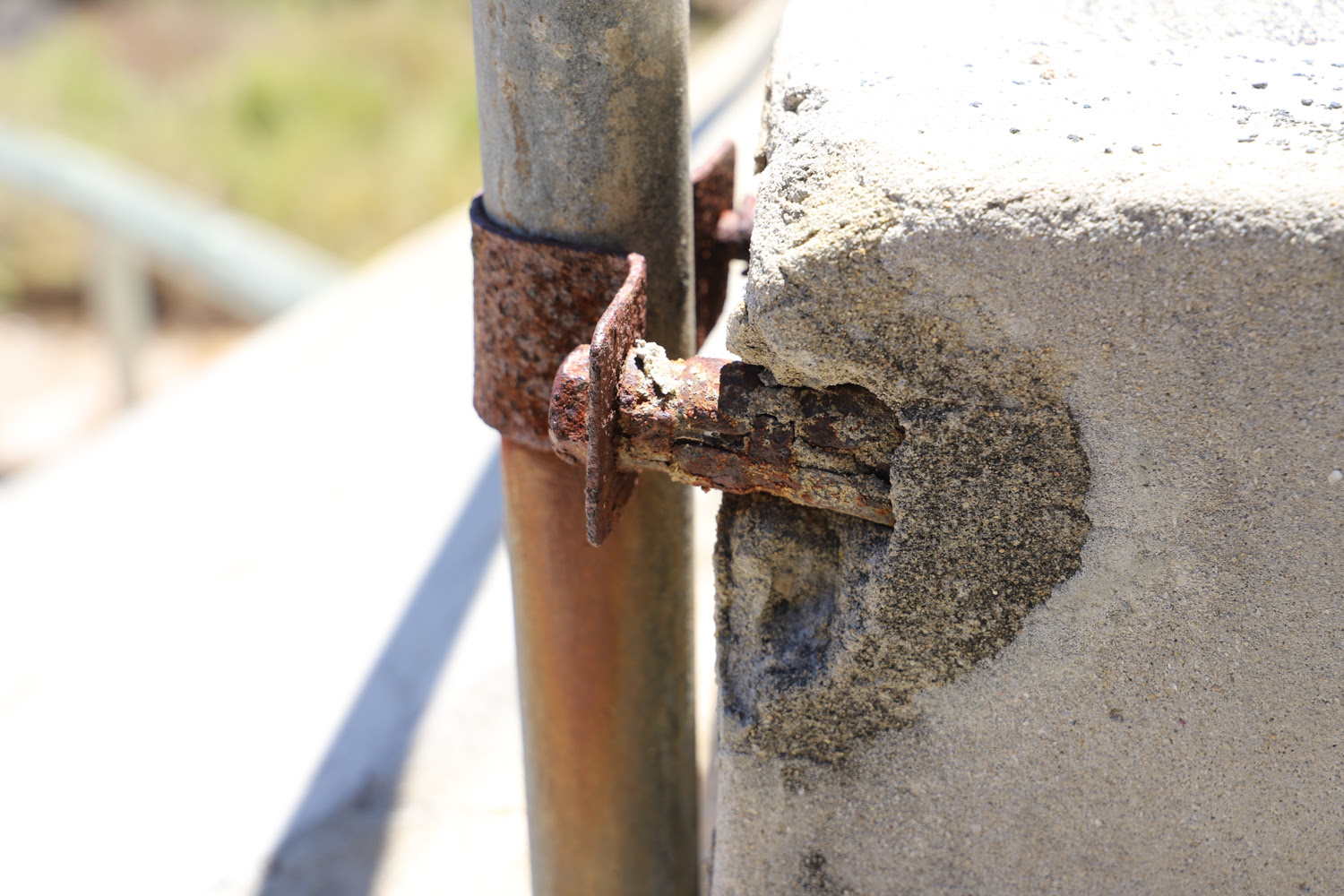By Western Specialty Contractors — Galvanic corrosion frequently afflicts structures such as commercial roofing, infrastructure elements and façades, and is also common in the restoration of existing structural steel and concrete reinforcement.
By understanding the root causes and manifestations of galvanic corrosion and adopting appropriate mitigation strategies, property owners and managers can safeguard their investments and ensure the longevity of their buildings.
Galvanic corrosion occurs when two uniquely different metals, such as copper and steel, are physically in contact with each other and immersed in a common electrolyte, such as water/moisture or when the same metal is exposed to an electrolyte with different concentrations. In a galvanic couple, the more active metal (the anode) corrodes at an accelerated rate, and the more noble metal (the cathode) corrodes at a slower rate.
Rod O’Bannon, manager of Western Specialty Contractor’s Sheet Metal Division, explained:
In the presence of moisture or grime, metals with varying electrochemical potentials encounter each other, setting off electrochemical reactions that lead to the deterioration of one or both metals. You are quite literally creating a battery with the movement of electrons; that’s when the corrosion begins. The combination of dissimilar metals will either accelerate the corrosion process or do nothing, but it’s important to understand which combinations of metals will work against you.
Galvanic corrosion often manifests as chalky mineral deposits, sometimes tinged with a rusty-orange hue (ferrous corrosion). These clusters usually accumulate in concealed areas of a building, such as behind panel systems or under parapet caps. This corrosion may remain undetected until it causes interior water leaks or fosters mold growth, underscoring the importance of proactive assistance and scheduled condition assessment and maintenance. Identifying dissimilar metals quickly and making corrections before damage is noticed is key to preventing future problems.
Robert Caputo, an expert in galvanic corrosion and Western Specialty Contractors Region Manager for the New York and Washington DC Metro Areas, advised:
Always be proactive and not reactive. Routine inspections to detect and address galvanic corrosion before it escalates into severe structural issues are always recommended. Partnering with a seasoned specialty contractor for annual roof, parking garage and façade inspections will facilitate early detection and mitigate corrosion-related concerns.
Tips to prevent and mitigate galvanic corrosion:
- The separation of dissimilar metals should be the first step when possible between bolts, fasteners and materials in general. Spacer materials like rubber, plastic, nylon, or neoprene can also be interposed between metals to provide electrical insulation and minimize corrosion risk.
- Coating materials such as bituminous coatings, zinc-rich primers, epoxies, etc. may also be used to prevent or slow the galvanic corrosion process. The inclusion of zinc anodes within concrete repairs will serve as sacrificial anodes and take the brunt of the corrosion instead of the structural steel or reinforcement.
- Waterproofing systems are another great way to eliminate the intrusion of water and close the circuit required to induce galvanic corrosion.
- Installing induced current systems are also an option to help slow or halt the corrosion process, as well as using stainless fasteners as a compatible alternative to traditional metal fastenings.
Galvanic corrosion poses a substantial threat to the structural integrity of buildings; being aware of this during and after construction is key to avoiding future issues. Taking proactive maintenance and preventive measures is advised for any property manager and/or owner to protect the integrity of their buildings and structures.
For more information on galvanic corrosion and proactive maintenance solutions, contact the Western Specialty Contractors branch nearest you.
About Western Specialty Contractors
Family-owned and operated for more than 100 years, Western Specialty Contractors is one of the nation’s largest specialty contractors in masonry and concrete restoration, waterproofing and specialty roofing. Western offers a nationwide network of expertise that building owners, engineers, architects, property managers and FMs can count on to develop cost-effective, corrective measures that can add years of useful life to a variety of structures including industrial, commercial, healthcare, historic, educational and government buildings, as well as parking structures and sports stadiums. Western is headquartered in St. Louis, MO, with 30 branch offices nationwide.








